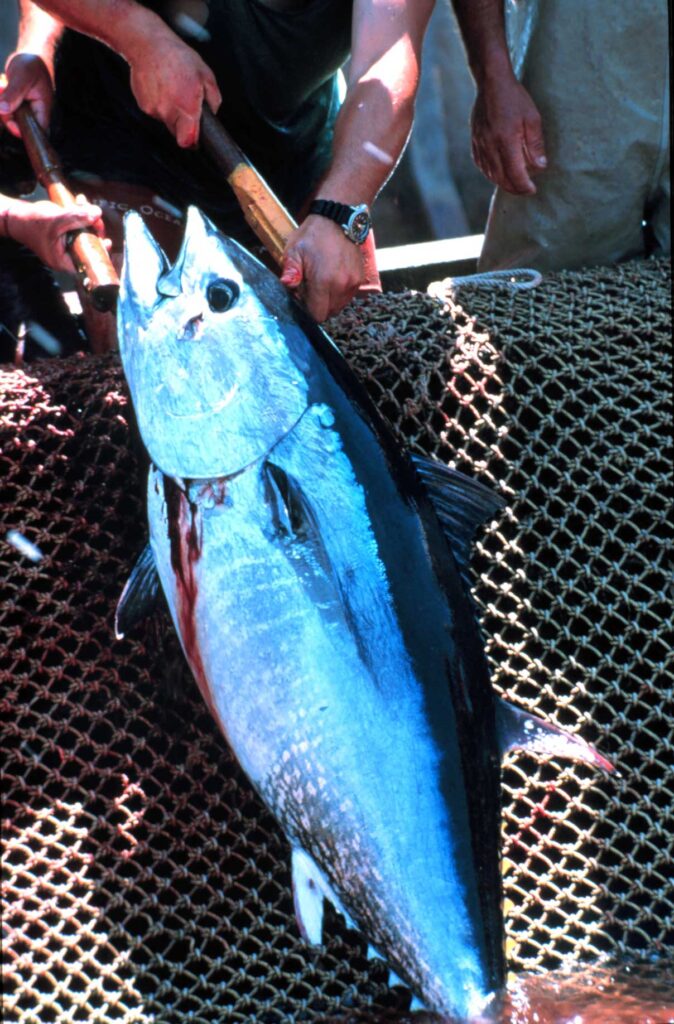
Last updated: 10 May, 2025 @ 12:11
The 2024 Sustainable Tuna Yearbook reveals that consumers in the UK spent £408.5m on more than 61 tonnes of tuna products between June 2022 and 2023.
With these vast figures in mind, Fish Face Seafood Blog decided it was time to take a closer look at the various types of tuna available on the UK market.
Skipjack tuna
Skipjack is the most widely sold species of tuna in the UK, representing almost 80% of all tuna retail products between June 2022 and 2023.
The fish is also popular worldwide, making up a whopping 57% of the world’s tuna catch.
The smallest of the main commercially fished tuna, skipjack mature rapidly and reproduce throughout the year – making them less susceptible to over-fishing.
Found in parts of the Atlantic, Indian and Pacific Oceans, the skipjack tuna is a popular and affordable choice for consumers.
With firm, meaty ‘chunks’ skipjack tuna is versatile when it comes to culinary uses – with a classic recipe for cheesy tuna melt our all-time favourite (served with a side of salt and vinegar crisps and some BBQ sauce of course).
Albacore tuna
This sleek, bullet-shaped fish is built for speed. Usually found in the deeper waters of the Pacific, Indian and Atlantic Oceans, as well as the Mediterranean Sea and UK waters, the light flesh of the albacore tuna makes it popular with consumers and can be increasingly found in UK supermarkets.
Representing just 4% of the world’s tuna catch, albacore tuna is popular in Spain and Portugal where it is known as Bonito del Norte.
The high fat content of the fish makes its flesh firmer, and more sought-after by commercial chefs.
Albacore tuna is also sold in ‘artisan’ style tins, and commands a higher price than skipjack tuna. It is occasionally sold as ‘white tuna’.
A small Albacore tuna fishery exists off the west coast of Ireland, some of which is canned and sold by Killybegs-based Shines Seafood.
In 2024, licenses were also granted to a handful of UK-based vessels for a commercial fishery with a quota of 630 tonnes – as reported by Fishing News.
Albacore tuna is great with pasta or a summertime salad – we’re picturing capers, black olives, fresh fat tomatoes and a little onion. Basically, something like this fantastic recipe from Cooking Mediterranean.

Yellowfin tuna
Named after its yellow… well, fin – the yellowfin tuna represents around 30% of the world’s tuna catch. However, the majority of fish goes to Japan where yellowfin is used for sushi.
Distributed across the Pacific, Indian and Atlantic Oceans, yellowfin tuna is highly sought-after as a commercial species.
Tinned yellowfin tuna can be found in the UK, although it’s noticeably more expensive than skipjack or albacore tuna. Yellowfin steaks are also commonly found in most supermarkets.
Bluefin tuna
Increasing numbers of bluefin tuna are returning to UK waters, especially in the English Channel where in 2023 a small commercial fishery was trialled – the first for more than 60 years.
There are actually three species of bluefin tuna, the Atlantic, Pacific and southern.
Considered the best quality of all tuna, the bluefin has suffered from over-fishing – resulting in increased demand, and prices, for this highly-prized fish.
Once caught and landed by fishermen, great care is taken to ensure the quality of the fish remains high.
Most commonly used for sashimi, you’re unlikely to find bluefin tuna sold in tins at your local supermarket.

(Image: Courtesy of United Nations Food and Agriculture Organization | Danilo Cedrone)
Tuna: find out more
If you’re keen to find out more about tuna, and the sustainable methods used in catching the various species of tuna then the Marine Stewardship Council’s Sustainable Tuna Yearbook 2024 is for you.
Further reading: Seafood Carbon Emissions Profiling Tool
If you’re a carbon-conscious consumer then you’ll love the new Seafood Carbon Emissions Profiling Tool released by Seafish.
Share this Fish Face Seafood Blog article.